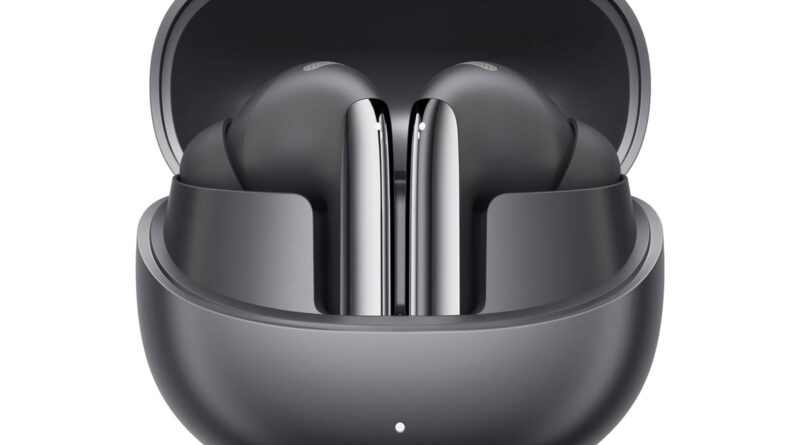QCY MeloBuds Pro Review – Low Cost Yet Decent
One of the most recent iterations of the endless QCY TWS buds saga, promising improved connectivity and some better attention to sound playback, at an insignificant purchase price. Checking such proposition’s realism was the purpose of my assessment of the MeloBuds Pro..
In this Article
At-a-glance Card
| PROs | CONs |
| Decent sound and call quality at an insignificant price | Not audiophile-tier sound quality (of course) |
| Good connectivity | Meh preset and custom EQ quality (again: of course) |
| LDAC support | Oversensitive war detection |
| (Almost always) effective ANC | |
| Nice app features adding practical values | |
| Low Latency mode (also on LDAC) |
Full Device Card
Test setup
Transports: Samsung smartphone, Sony NW-A55 and WM-1A DAP – 16/24bit-44.1/192KHz and DSD64/128/256 tracks
I am not writing these articles to help manufacturers promote their products, even less I’m expecting or even accepting compensation when I do. I’m writing exclusively to share my fun – and sometimes my disappointment – about gear that I happen to buy, borrow or somehow receive for audition.
Another crucial fact to note is that I have very sided and circumscribed musical tastes: I almost exclusively listen to jazz, and even more particularly to the strains of post bop, modal, hard bop and avantgarde which developed from the late ’50ies to the late ’70ies. In audio-related terms this implies that I mostly listen to musical situations featuring small or even very small groups playing acoustic instruments, on not big stages.
One of the first direct consequences of the above is that you should not expect me to provide broad information about how a certain product fares with many different musical genres. Oppositely, you should always keep in mind that – different gear treating digital and analog sound in different ways – my evaluations may not, in full or in part, be applicable to your preferred musical genre.
Another consequence is that I build my digital library by painstakingly cherry-pick editions offering the least possible compression and pumped loudness, and the most extended dynamic range. This alone, by the way, makes common music streaming services pretty much useless for me, as they offer almost exclusively the polar opposite. And, again by the way, quite a few of the editions in my library are monoaural.
Additionally: my library includes a significant number of unedited, very high sample rate re-digitisations of vinyl or open-reel tape editions, either dating back to the original day or more recently reissued under specialised labels e.g. Blue Note Tone Poet, Music Matters, Esoteric Jp, Analogue Productions, Impulse! Originals, and such. Oppositely, I could ever find an extremely small number of audible (for my preferences) SACD editions.
For my direct and conclusive experience, virtually none of the above is available on the most common streaming platforms, which makes their offering of high sampling material apriori pointless for my purposes. Quite simply, then, I don’t use streaming services as I find them not up to my requested quality.
My source gear is on its turn selected to grant very extended bandwidth, high reconstruction proweness, uncolored amping. Which in particularly means that TWS and any other form of lossless-based wireless gear is apriori off my selection panel.
And finally, my preferred drivers (ear or headphones) are first and foremost supposed to feature solid note-body timbre, and an as magically centered compromise between fine detail, articulated texturing and microdynamics as their designers can possibly achieve.
In terms of presentation, for IEMs I prefer one in the shape of a DF curve, with some very moderate extra pushup in the midbass. Extra sub-bass enhancement is totally optional, and solely welcome if seriously well controlled. Last octave treble is also welcome from whomever is really able to turn that into further spatial drawing upgrade, all others please abstain.
Physicals
Build
QCY MeloBuds Pro carry & battery recharge case is very small, and fully plastic. I’m particularly attracted by its tiny size which makes it possible to always find a place for it, be it even on blue jeans’ front coin pockets.
Fit and Comfort
In general terms MeloMuds Pro feature the ubiquitous “short stem earbuds” shape, with some minor (but important) size and shape variations making them easy to fit and comfy to wear pretty much in any occasions except when reclining the head onto a surface (e.g. when in bed sleeping on a side), where their (relatively) fat body does get a decisive bit in the way of full comfort.
Tapping once on more on the housings allows the user to issue the usual commands e.g. track fwd, track backwards, play, pause, answer call, reject call, etc. Gestures can be customised on the companion (Android / iOS) app, which deserves a more focused mention. More on this below.
Lastly, MeloBuds Pro offer wear detection – i.e., playback automatic start / pause when housings are effectively worn / taken off by the user – a very uncommon feature on such an inexpensive product. The system works, yet sadly it works “too much”: earpieces are overreactive to small fitting adjustments, this resulting for example in unwantedly abruptly closing a call right after starting it.
Connectivity and battery
QCY MeloBuds Pro support Bluetooth 5.3, and SBC / AAC and LDAC codecs. No aptX sadly. A LL (Low Latency) mode can be switched on/off via the app or gesture, and that is pretty effective for “average” usage e.g. watching movies or non-competitive gaming.
Pairing with all the transports I tried, starting from my phone, was straightforward. Connection holds for the whole 10 meters indicated in the specs on SBC codec. LDAC is a bit wonkier: you can get up to 8-9 meters distance, but only if not too much interference is around. Good enough for uncrowded office use, but not more than that.
Multipoint is also (well) supported: you can be listening to music streaming from a DAP, and be interrupted by a call incoming on the phone. Sadly, however, it is incompatible with LDAC.
MeloBuds Pro themselves turn ON when taken off the battery case, and OFF when put back in, like most if not all of their competitors, but in addition to that Wear Detection is supported, and it works pretty well in general, with a single albeit quite annoying drawback: it’s oversensitive to touches. In practice this means that if you wear the buds quickly to answer a call, and a few seconds into it you feel the need to reposition either bud a bit for better comfort, [high] chances are you stop hearing from one bud, or the call gets terminated. Even with such problem, it’s worth noting the feature presence on such a low cost model.
The battery-case has a USB-C port for recharging of course. The earpieces have something like 6-8 hours of playback time depending on usage, and especially in whether ANC is turned on or off. The case can fully recharge them for about 3 more times, up to a theoretical autonomy of about 30 hours. Earbuds fully recharge in 1 hour when stored in the case. The case itself requires instead more time (like 1.5 hours) for a full charge, but after 10 minutes it already acquires like 1h of autonomy.
The companion app is commendably packed with features and quite handy subtleties. Gesture are customisable for one, and some of those are particularly handy, and not too common to find on such a low cost product, such as the possibility to switch Transparency mode (obviously the best option for calls), or LowLatency on/off on the fly (i.e. without having to pull the phone off the pocket and access the app).
Sound analysis
TWS earphones/headphones/earbuds cannot and of course will no do miracles. Bar very latest iterations, usual BT codecs are lossy, and some of them are loe res too. Their built-in DAC are logically and expectedly much less sophisticated than those incorporated into high quality DAPs or mobile DAC/AMP or dongles. The situation is by definition not on the same page as wired IEMs / cans.
Last and not least in most cases TWS drivers are used to playback streamed tracks from services like Spotify, Tidal etc, which as any real acoustic music fond audiophile knows offer at best “high resolution sampling” tracks, yet referred to sub-best, and sometimes even subpar masters/editions. Curtly put: TWS drivers are by design not for real audiophile use (some hint of improvement is slooooowly coming up from some non-chifi vendor but it’s not fully on the market yet)
QCY MeloBuds Pro make of course no exception, and their support for LDAC codec, while positive, does not have the power to radically change the situation. With all that said, their sound performance is not bad at all, especially looking at their almost ridiculous asking price. Tonality is nice and reasonably balanced, bass is present and quite dramatic, treble is engaging and not shrilly.
Expectedly, refinement is lacking: bass is (moderately) bloated, and the situation can only partially be corrected by custom EQing, Technicalities… well, forget about them. Stage is quite bidimensional, flat and not wide (if not really narrow), imaging is no more than averaga and layering and separation are to best to be talked about. Some of the preset EQs (eg the “360° sound” one do impact on some of these limitations, but introduce further detriments on other aspects. Long story short: MeloBuds Pro – like most if not all of their competitors – are not for audiophile listening. Period.
ANC and ENC are commendably articulated (multiple modes are available) and at least some of them are per se quite effective. Given what I said about about the product’s absolute limitation when considered for high quality musical listening, ANC quality is of course less relevant than it might be. ENC, instead, is very effective and indeed helps significantly improving call quality, in terms of listening quality at both end of the call.
Specifications (declared)
| Housing | IPx5 certified. Plastic charging case (not waterproof). |
| Driver(s) | 1 x 12mm Bio-diaphragm driver |
| Connectivity | Bluetooth 5.3 – SBC AAC LDAC codec. 80ms native latency. 10m range |
| Battery | 8.5h battery life ANC on, 7.5h ANC off. 4 full earbuds recharges (350mAh) for the case. |
| Accessories and package | USB-C battery case recharge cable, Detachable necklace |
| MSRP at this post time | € 40,29 on AliExpress including shipping and taxes, or $47,99 + import cost on manufacturer site |
| Purchase link | https://www.qcy.com/lang-en/productview/1876.html?spec=1879 |
Considerations & conclusions
QCY MeloBuds Pro won’t deliver on the front of audiophile listening – which is a totally expected situation by anyone who knows what audiophile sound reproduction requires, and see what this product, like all its category siblings, simply does not have.
With that said, they are a nice option for casual musical listening paired with good quality business calls – at a ridiculous price.
The MeloBuds Pro I assessed have been provided free of charge by QCY, to whom my thanks go for the consideration and the trust.
Our generic standard disclaimer.







